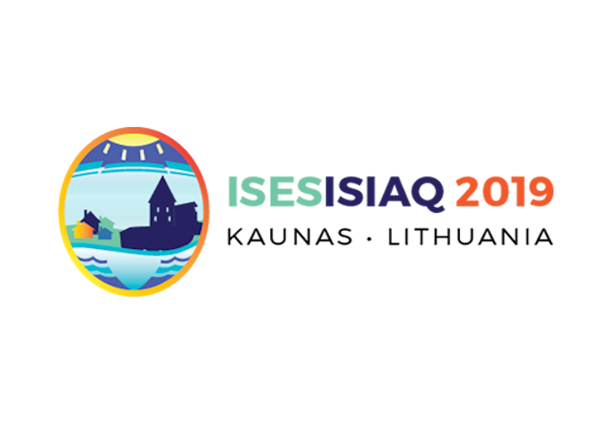ISES-ISIAQ 2019 CIEHR Presentations
Presentations at the 2019 ISES-ISIAQ International Conference
In August of 2019, CIEHR members presented at the Joint Annual Meeting of the International Societies of Exposure Science and Indoor Air Quality and Climate (ISES-ISIAQ 2019).
The Hopi Environmental Health Project (HEHP) - Measuring Concentrations of PM2.5 in Households on Hopi Lands
Hadeed S.1, O'Rourke M.K.1, Alshammari M.1, Blohm J.1, Canales R.1, Paukgana P.2, Olivas G.3, Carl A.3, Lugo-Lerma V.1, Gonzalez-Figueroa E.1
1 The University of Arizona College of Public Health, Tucson, AZ, USA, 2The Hopi Tribe, Kykotsmovi, AZ, 3The University of Arizona, Tucson, AZ, USA
Abstract
Despite an estimated 6.5 million people in the United States burning solid fuels for heating, respiratory health effects from indoor exposure to smoke and particulate matter (PM) have focused on populations in developing nations, and have been largely ignored in developed nations. The Hopi Tribe of Northern Arizona heavily relies on burning of coal and wood for heating and cooking during winter months. PM2.5 was measured in Hopi households for 24-hours during heating and non-heating seasons using real-time area monitors. Primary heating fuel type was recorded from questionnaires completed by primary respondents. Indoor mean concentrations of PM2.5 were assessed across seasons and household fuel types. Fifty-one households were sampled, 36 of which completed follow-up sampling during both heating and non-heating seasons. Across all households and seasons, mean (SD) concentrations of PM2.5 were 36.8 μg/m3 (175.3); 51.13 μg/m3 (218.7) during the heating season, and 18.6 μg/m3 (91.4) during the non-heating season. When considering fuel type, households burning wood and coal (n=17) had highest indoor PM2.5 concentrations (53.6 μg/m3 (136.0)) during the heating season. Homes using a combination of electricity, coal and wood (n=11) during the heating season had an indoor concentration of 46.6 μg/m3 (155.7). During the heating season, concentrations were 4.16 times greater for coal and wood homes, 2.52 times greater in electric, coal and wood homes, and 2.03 times greater in homes burning coal, wood and natural gas, compared to the non-heating season. PM2.5 concentrations were elevated in coal and wood burning households. Although slight reductions were observed in homes that used a combination of electricity or natural gas with coal and wood, concentrations exceeded the USEPA ambient standard of 35 μg/m3 and the WHO guideline of 25 μg/m3. Occupants of these households may be overexposed to PM2.5 and at greater risk for developing respiratory and cardiovascular diseases.
Quantitative Risk Assessment: Uranium exposure from inhalation
Carl A.1, Harris R. 1, Alshammari M.1, O'Rourke M.K.1
1The University of Arizona, USA
Abstract
Uranium 238 (238U), a natural occurring radioactive metal is associated with kidney diseases, respiratory diseases/cancer, and bone cancer. Uranium is found in soil, water, and air. Information regarding 238U inhalation on Hopi lands is limited. We performed a quantitative risk assessment on the relative cancer risk from inhaling 238U. We measured particulate matter (PM2.5) in Northeastern Arizona on Hopi land using a personal DataRAM (pDR-1500). Placement occurred inside homes in the summer and winter seasons, each assessment ran for approximately twenty-four hours. The pDR-1500 contained filters that were analyzed for metal concentrations using inductively coupled plasma mass spectrometry (ICP-MS). Participant exposures were calculated using 238U data and personal questionnaires. Average duration was substituted for missing duration values. We obtained carcinogenic cancer risks by multiplying the exposure concentration and inhalation unit risk value obtained from the Agency for Toxic Substances and Disease Registry (ATSDR). Results: Data were collected in a total of 17 homes in the summer and 7 homes in the winter. Participants lived at home for an average of 24 years (sd ±22). The average concentration of 238U in the summer was 0.94 µg/m3 (sd ±0.39) and 0.82 µg/m3 (sd ±0.47) in the winter. The average exposure concentration in the summer was 0.24 µg/g (sd ±0.23) and 0.05 µg/g in the winter (sd ±0.04). The cancer risk factor was 7.3*10-5 and 1.5*10-5 for summer and winter seasons respectively. Preliminary data indicates that on Hopi lands the risk of respiratory diseases and cancer based on 238U exposure exceeded the acceptable risk limit of 10-6 carcinogens per lifetime.



